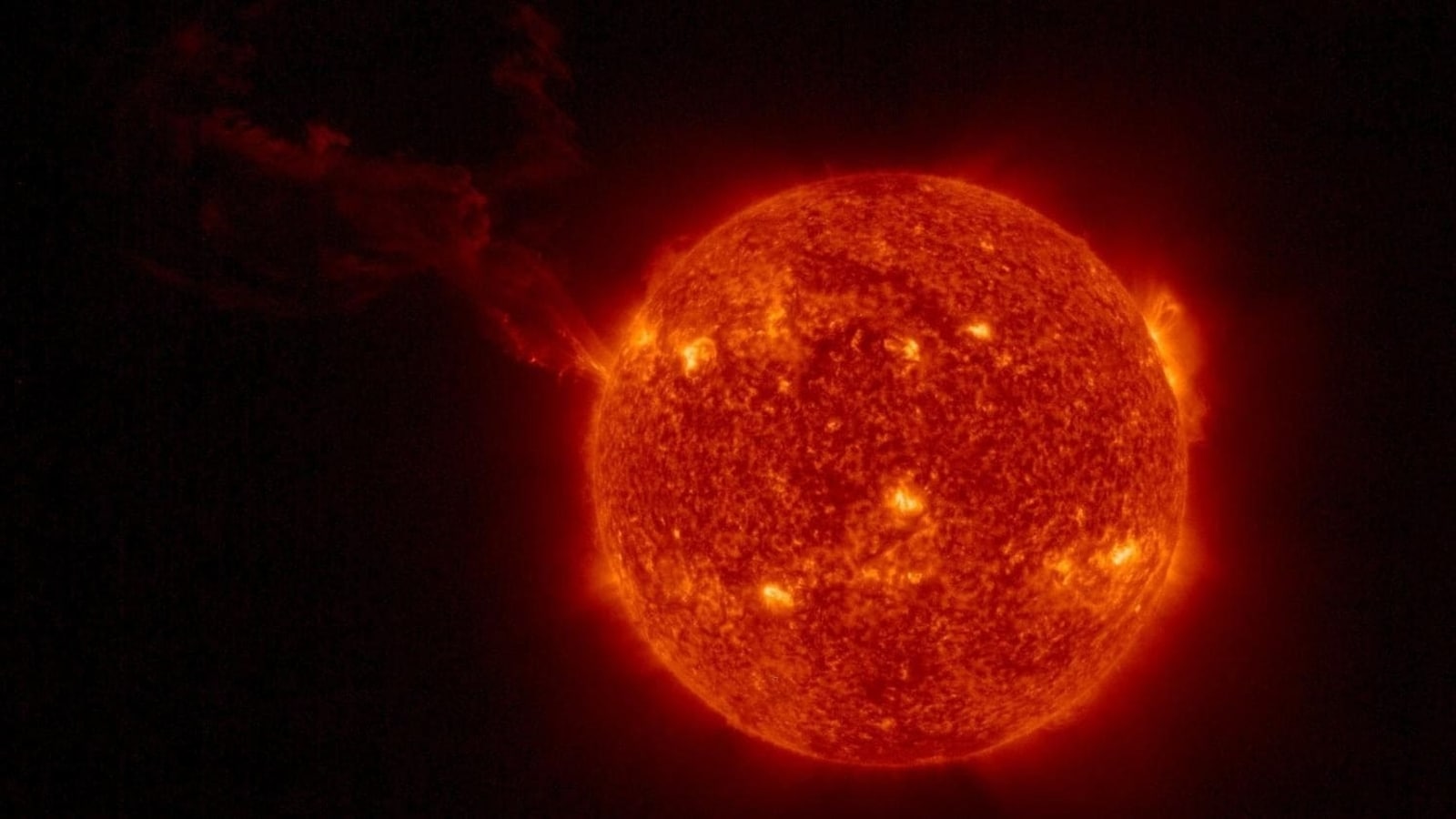NASA detects CME rushing out of ‘canyon of fire’; Solar storm could strike on Nov 4
A solar storm warning has been issued after NASA spotted CME being hurled out of a magnetic filament eruption. Forecasting models believe that it might strike the Earth and trigger a solar storm on November 4.

No solar storm strikes were seen on Halloween, thankfully. Most astronomy enthusiasts must remember the 2003 solar storm that struck on Halloween and resulted in NASA Solar and Heliospheric Observatory dropping altitude temporarily, and Sweden losing power for an hour. But trouble for the Earth is not over yet. A new coronal mass ejection (CME) was released as a result of a magnetic filament eruption on the region of the Sun known as the ‘canyon of fire'. NASA spotted it first, but its initial models predicted that it may miss the planet. But now, the National Oceanic and Atmospheric Administration (NOAA) forecast has said that it will sideswipe us, triggering a solar storm.
The information comes from SpaceWeather.com which said, “A solar magnetic filament erupted on Halloween night, carving a "canyon of fire" in the sun's southern hemisphere. Initial NASA models of the resulting CME suggested it would miss Earth. However, new NOAA models of the same CME point to a glancing blow on Nov. 4th. If so, the impact could cause a minor G1-class geomagnetic storm with high-latitude auroras”.
Solar storm could strike on November 4
The forecast has predicted a G1-class storm, which essentially means that it will spark auroras and can cause disruptions for some radio waves, resulting in likely disruption of communication for mariners, aviators, drone pilots, and amateur radio operators.
However, that is not the full extent of what solar storms can do. In worst cases, such storms can disrupt GPS and mobile networks, hamper internet connectivity, damage satellites, cause power grid failures, and even corrupt ground-based electronics.
How NASA SOHO watches the Sun
NASA's SOHO is a satellite that was launched on December 2, 1995. It is a joint project between NASA and the European Space Agency (ESA) to study the sun, its atmosphere, and its effects on the solar system. Equipped with 12 scientific instruments, such as an Extreme Ultraviolet Imaging Telescope (EIT), Michelson Doppler Imager (MDI), LASCO (Large Angle and Spectrometric Coronagraph), and others, SOHO captures images of the sun's corona, measures the velocity and magnetic fields of the sun's surface, and observes the faint corona around the sun.
Catch all the Latest Tech News, Mobile News, Laptop News, Gaming news, Wearables News , How To News, also keep up with us on Whatsapp channel,Twitter, Facebook, Google News, and Instagram. For our latest videos, subscribe to our YouTube channel.





























